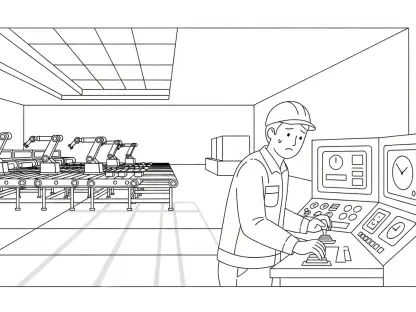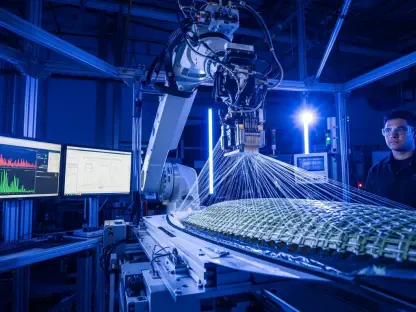The aviation industry is making strides toward achieving net-zero carbon emissions, driven by an urgent need to address environmental challenges globally. Airlines worldwide are increasingly pledging to use greener jet fuels, aiming to meet ambitious climate goals by mid-century. Sustainable aviation fuels (SAFs), primarily derived from waste materials such as used cooking oil, offer an environmentally friendly alternative to traditional jet fuels, boasting the potential to reduce carbon emissions by up to 80%. However, the path to widespread adoption of SAFs is fraught with challenges, as highlighted by the International Air Transport Association (IATA). These challenges include significant policy gaps that could jeopardize the industry’s ability to deliver on its promises. As airlines navigate this complex landscape, understanding the hurdles and potential solutions is crucial for realizing a sustainable future in aviation.
Challenges in Policy and Production
Despite the positive momentum in airlines’ commitment to greener fuels, achieving net-zero emissions by 2050 remains a formidable challenge largely due to policy constraints. IATA has spotlighted the insufficient policies that currently hinder SAF production and prevent its widespread adoption. While forecasts initially predicted robust growth in greener fuel availability, projections have now adjusted to a more modest production level of 2 million tonnes in 2025, accounting for just 0.7% of the total fuel consumed worldwide in the same year. This represents a significant underachievement from earlier predictions and signals the urgent need for policy intervention to spur development. Dr. Marie Owens Thomsen, IATA’s sustainability leader, advocates for a significant shift in governmental policy, suggesting that redirecting the $1 trillion in annual fossil fuel subsidies towards renewable energy production is imperative. Without a strategic overhaul in regulation and allocation of resources, the ambitious net-zero target looms as potentially unattainable, demanding immediate attention and action.
Mandates and Economic Impact
As Europe and Britain have rolled out mandates requiring airlines to blend sustainable fuels, these regulations have inadvertently escalated airline operational costs, primarily through added compliance fees. While mandates aim to boost the adoption of SAFs, the financial impact poses a significant challenge to airline operations. IATA has cautioned against the blanket implementation of similar mandates globally, warning of the potential economic ramifications that could arise. Singapore has introduced a unique approach, instituting a levy on departing flights to finance green fuel purchases. Although this initiative is praised for its innovation, the effectiveness of such measures in truly advancing sustainable aviation fuel adoption remains uncertain. This intricate balance between regulation and cost sheds light on the complexities involved in transitioning to a more sustainable aviation model. Airlines find themselves at a critical juncture where cost-efficiency and compliance must coexist, a dynamic that requires careful consideration and strategic planning.
Innovation and Collaboration
The emergence of approximately 300 global projects aimed at increasing SAF production offers a promising outlook for the industry, highlighting a proactive response to the burgeoning demand for cleaner aviation solutions. Particularly in the Asia-Pacific region, significant developments are underway, tapping into the abundant raw materials essential for SAF production. However, the journey towards increased output has not been without its setbacks, as numerous projects encounter delays that stifle progress despite adequate resources. The lack of established technologies and practices in deploying greener aviation fuels necessitates a trial-and-error approach, with each hurdle offering valuable insights into potential solutions. This phase of exploration and experimentation highlights the importance of cross-industry collaboration and shared learning. By uniting efforts and pooling expertise, stakeholders can better navigate the complexities surrounding technological advancements. Bridging gaps in policy, support, and infrastructure will be pivotal in overcoming existing challenges, fostering a sustainable future for aviation.
Navigating a Sustainable Future
Despite strong progress in airlines’ moves toward using greener fuels, reaching net-zero emissions by 2050 remains a formidable hurdle, primarily due to policy issues. The International Air Transport Association (IATA) has highlighted the lack of effective policies currently stifling Sustainable Aviation Fuel (SAF) production, thereby blocking its widespread use. Initial forecasts had predicted substantial growth in greener fuel availability, yet revised estimates now suggest a modest production level of just 2 million tons by 2025. This would only cover 0.7% of the total aviation fuel needed worldwide in the same year, indicating a significant shortfall from earlier expectations. Dr. Marie Owens Thomsen, IATA’s head of sustainability, stresses the need for a major policy change, proposing that the $1 trillion spent annually on fossil fuel subsidies be channeled into renewable energy production. Without a strategic revamp in regulations and resource allocation, the ambitious goal of net-zero emissions might remain out of reach, demanding immediate policy reforms and focused action.









